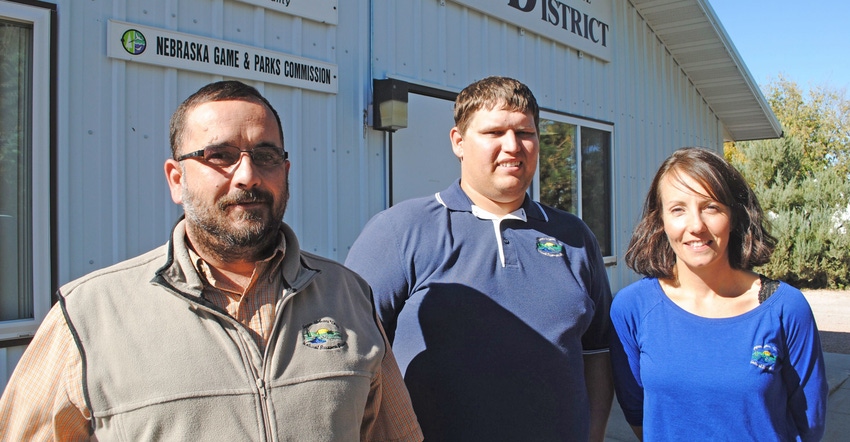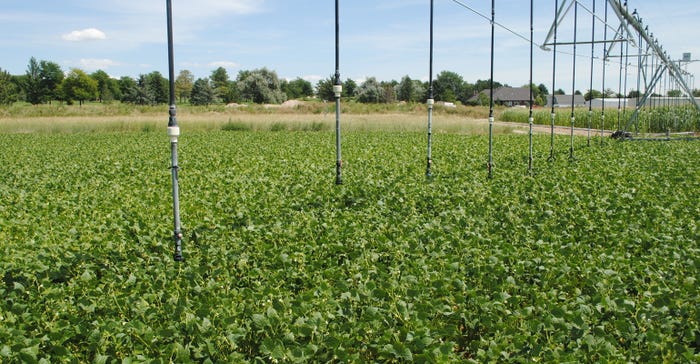
If you are an irrigator in the Pine Ridge and northern Panhandle of Nebraska, you have some challenges. Try growing a profitable crop under limited water, knowing that Mother Nature is only going to provide about 15 inches of precipitation annually. Then, throw extreme weather fluctuations into the mixture.
Information and management are crucial components to those growing crops under such conditions. That's why Upper Niobrara White Natural Resources District technicians based in Chadron have been providing weekly crop water use reports over the past 17 years to local irrigators throughout the summer. These reports have become a tool for farmers in the region who are trying to carefully schedule their irrigation treatments.
Limited water
"Irrigators pay attention to current and expected weather patterns," along with crop water use reports, says the district’s resources technician, Nevin Price. "For expected drought years, they plant low water-use crops."
The UNWNRD area has been a designated Groundwater Management Area since 1998, says Lynn Webster, NRD assistant manager. Since that time, irrigation has been closely monitored in the region. Today, nearly 250,000 acres within the NRD boundaries are irrigating a wide range of crops, including corn, dry edible beans, sugarbeets, alfalfa, potatoes, sunflowers, wheat and field peas.
Webster notes that among the irrigated areas of the NRD, about 191,000 acres are included in higher groundwater management subareas with specific irrigation allocations. NRD technicians have been closely monitoring static well water levels across the district, along with irrigation water use. The UNWNRD board of directors recently approved an allocation within the subareas of 65 inches over a five-year period. This allows irrigators to plan their crop rotations and projected crop water use over a longer period, so they can incorporate the planting of low water-use crops like field peas to offset heavier water-use crops like corn across the five-year period.
Although irrigation amounts vary year to year depending on the weather and precipitation, Webster says that usage has not exploded, and in some years, has actually declined because producers are more proactively managing water use.
Helpful technology
In-field technology is also a main management component for local irrigators. "The utilization of soil moisture sensors play a critical role in maximizing crop production and water savings," Price says. "Producers can save 1 to 2 inches of water annually, sometimes more, by utilizing the sensors and understanding the available water in the root zone," he explains. "They are able to tie information on rain, soil moisture, crop root zones and expected crop water use together to be able to effectively make a decision on whether to irrigate or not."
According to Price, saving an irrigation pivot pass or two in May might save water that is needed in July, or even in the following year. "Most producers have told me they are able to save water in the spring and fall when crops are starting to grow or are almost mature," he says.
"Knowing the soil moisture level preplant or during planting and at the end of the season is very important in not only determining the need to irrigate for crop needs, but can become a huge savings to the aquifer and the bottom line," Webster says.
Learn more about weekly UNWNRD crop water use reports and irrigation management tools at unwnrd.org.

CAREFUL WATERING: Many producers in the Nebraska Panhandle operate under limited water, so getting the most out of every drop of irrigation water on crops like dry edible beans, is crucial.
CAREFUL WATERING: Many producers in the Nebraska Panhandle operate under limited water, so getting the most out of every drop of irrigation water on crops like dry edible beans is crucial.
About the Author(s)
You May Also Like






